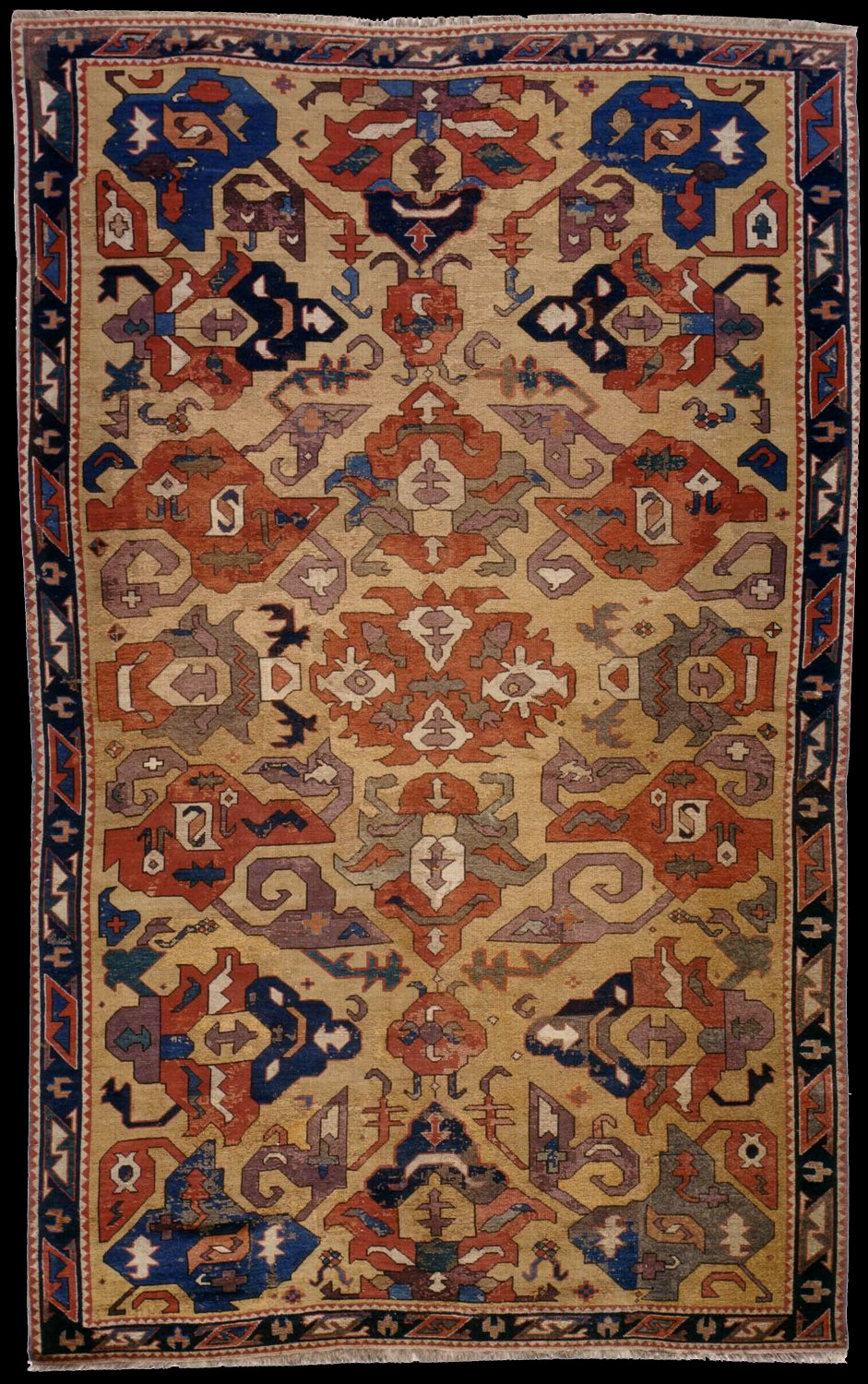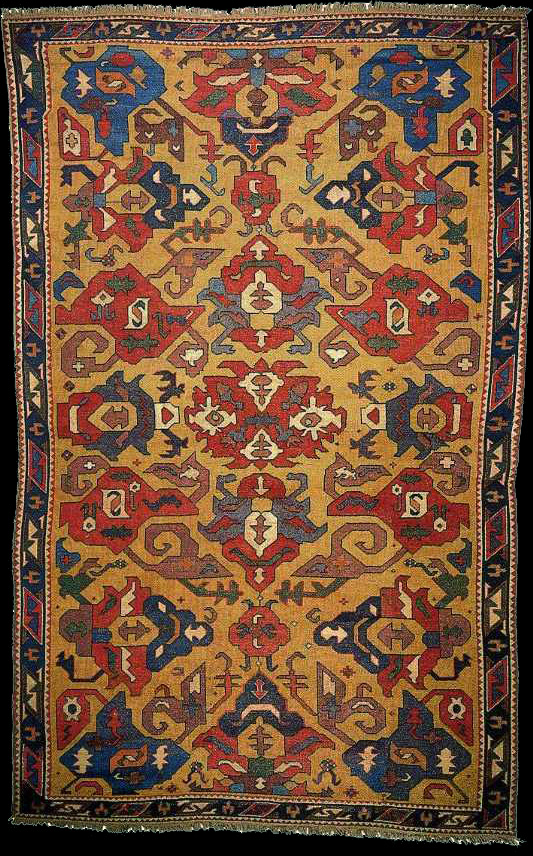A SOUTH CAUCASIAN CARPET
CIRCA 1800
Price Realized £12,000 ($23,832)
Sale Information
Christie's Sale 7390
Oriental Rugs and Carpets
16 April 2007
London, King Street
Lot Notes
Lot Description
18-A SOUTH CAUCASIAN CARPET
CIRCA 1800
Overall wear, corroded black, rewoven areas, scattered repiling, sides
partially rewoven, ends rewoven
9ft.2in. x 5ft.10in. (279cm. x 178cm.)
Provenance
Anon sale, Sotheby's London, 19 November 1971, lot 27
Anon sale, in these Rooms, 22 November 1973, lot 214
Sold in these Rooms, 17 October, 1996, lot 402.
This carpet is probably from the same workshops as two in the Textile
Museum, Washington D.C.; Charles Grant-Ellis, Early Caucasian Rugs,
Washington D.C., 1975, nos.13 and 14, pp.56-59. In all three cases not only
is the size of each very close, this being marginally the largest, but the
borders are also identical. They appear to represent a stage in the
development of Caucasian carpets between the large format rugs of the
seventeenth and eighteenth centuries and the classic Kazak and Karabagh rugs
of the second half of the nineteenth century. Both the other two rugs are
debased versions of the classic dragon design. Here the design, while not so
immediately close to an earlier prototype, certainly has a power of
composition and colour, particularly with its most unusual yellow field,
that is greater than the others. Another slightly later rug than the present
example but having exactly the same arrangment of motifs on a red rather
than a yellow field was exhibited in the L.A.Mayer Memorial Museum; R.
Hasson, Caucasian Rugs, Jerusalem, 1986, no.38, pp.96-97, attributed there
to Karagashli in the Kuba district).
Its earlier prototype is closer to the rugs attributed by Grant-Ellis
possibly to the Shusha district of the Karabagh region; Grant-Ellis, op.
cit., no.20, pp.70-1. The large palmettes and central panel certainly appear
to be related to that earlier design. But the construction of the design
with two bold X-designs running through the various motifs is precisely the
same as that of the white ground 'star' Kazaks of the second half of the
nineteenth century. The only difference here is that the continuous design
has in effect been cut to give complete X-panels rather than a central panel
flanked by two half designs. In both the 'star' Kazak group and the present
rug there are motifs in exactly the same placings, the only difference being
one of porportion. Thus the palmettes above and below the central lozenge
are, in the Kazak rugs, reduced to simple arrowhead flanking panels. And it
must be more than coincidence that the borders of some of the Star Kazak
rugs are formed of S-motifs.
This rug therefore fits exactly midway in the development of the most
collectable of all 19th century Kazak rugs from the more classically Persian
influenced products of the previous century, and adds considerably to our
appreciation of how the design evolved. |


